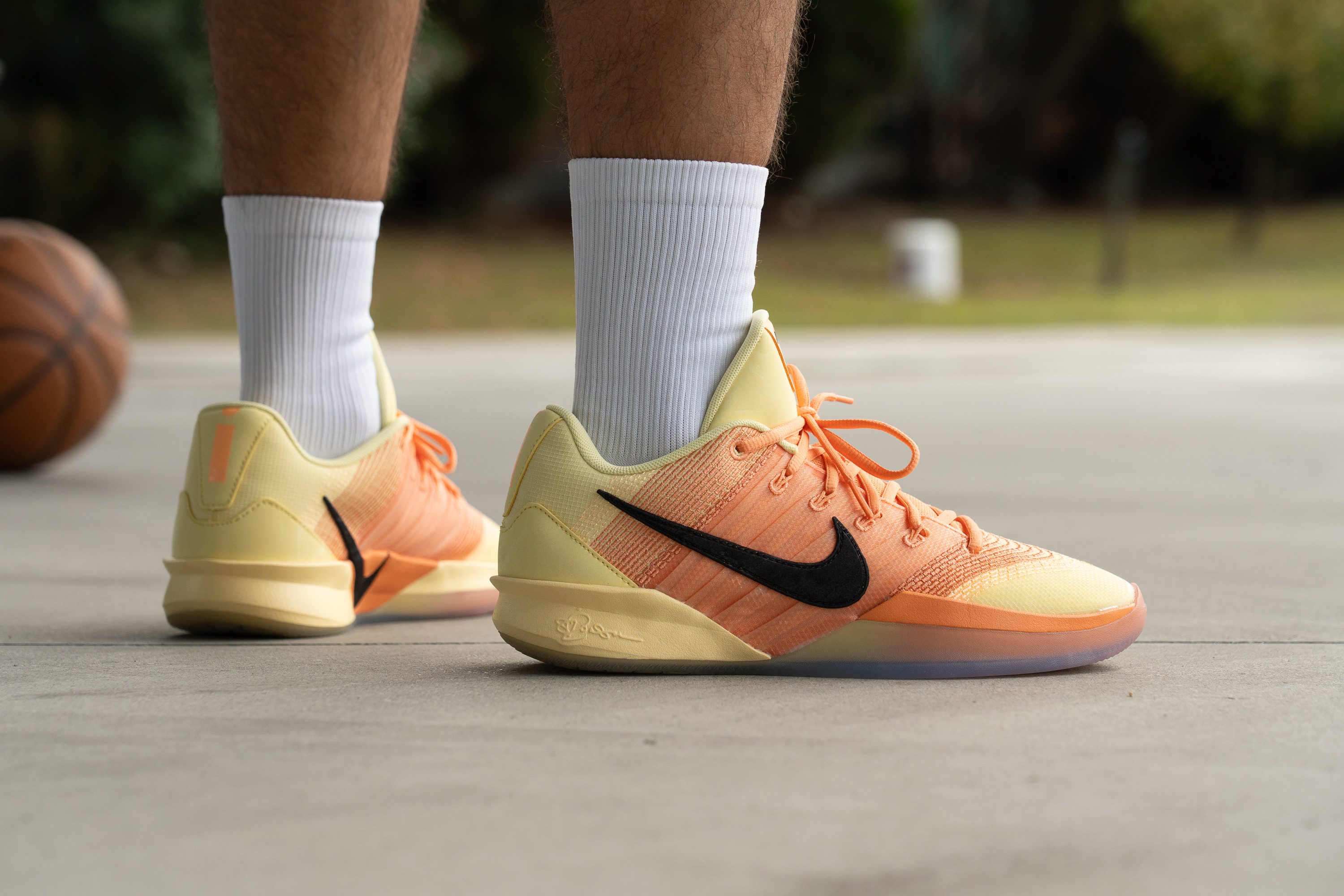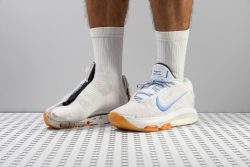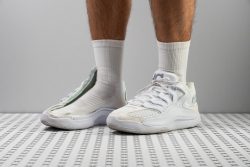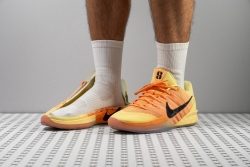7 Basketball Shoes With The Best Energy Return in 2025
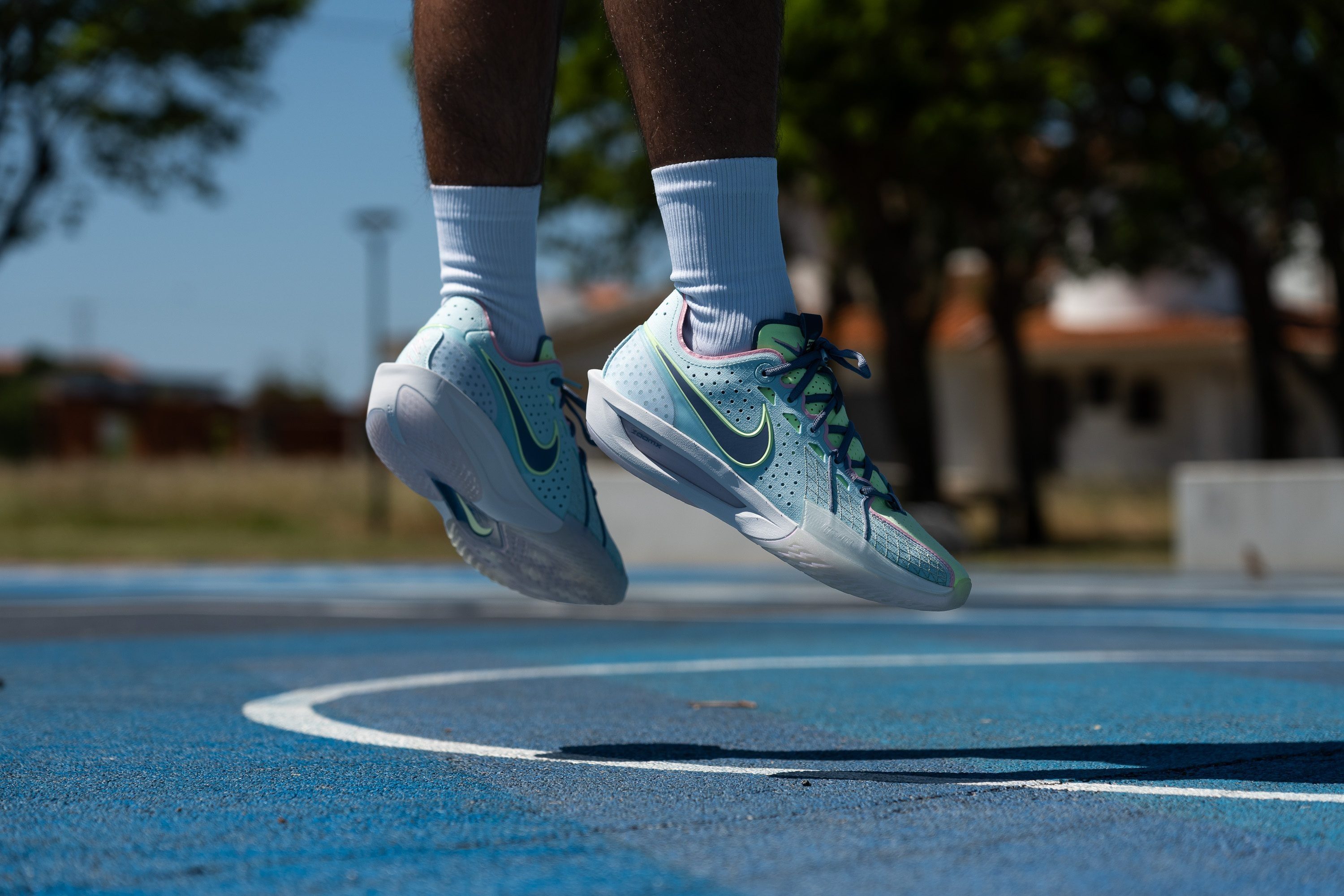
We buy shoes ourselves. We earn commissions when you buy through us, at no extra cost. Why trust us
Can basketball shoes make you jump higher and run faster? Not exactly.
While they can’t directly improve your vertical jump or running speed, basketball shoes with the highest energy return can help players perform better thanks to the added rebound in their ride.
We measure the energy return of all popular hoop shoes on the market to pick out the bounciest ones for this guide.
How we test Basketball shoes with the energy return
Our testing process starts with purchasing a pair of basketball shoes with our own money to avoid bias and brand loyalty.
First, we perform the shoes’ on-foot testing on the court and then dive into a more in-depth analysis in our lab. We use specialised tools and equipment to measure 30+ shoe parameters, including energy return.
For the latter, we follow the industry’s acclaimed ASTM F1976 protocol to retrieve the most reliable and consistent results. The test involves dropping an 8.5 kg mass from a height of 50 mm onto each shoe’s forefoot and heel areas. The hitting points remain consistent at 12% and 75% of the shoe length from the heel. It is also important to mention that we repeat the drop 30 times, conditioning the shoe for the first 25 reps, and then measuring the average energy return in the last 5 reps. The higher the percentage (%), the bouncier the shoe.
Shoes with a forefoot energy return of 64% or more make it to our catalogue of basketball shoes with high energy return.
Best overall basketball shoes with high energy return














































What makes it the best?
Pros
- Record-breaking energy return with ZoomX
- Significant improvement in lateral support
- Soft and comfortable step-in feel
- Excellent heel and midfoot containment
- Feels highly agile and nimble
- Fantastic outsole grip
- Lighter than average
Cons
- Below-average shock absorption
- Disappointing durability for the price
- Lacks breathability
Best basketball shoes with high energy return and shock absorption
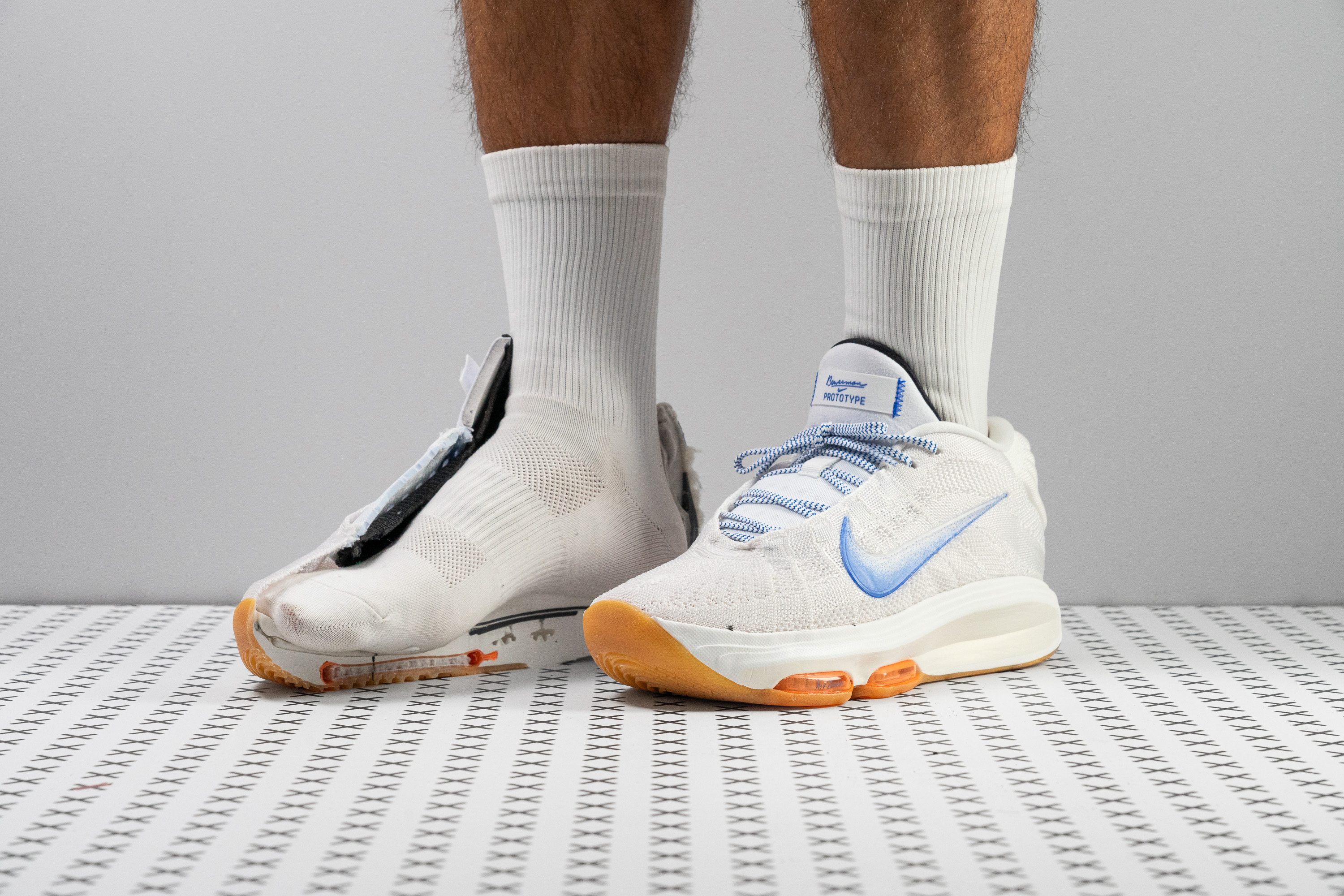


























































What makes it the best?
Pros
- Unmatched explosiveness with Zoom Air
- Unbelievable impact protection
- Great heel counter support
- Lightweight design
- Incredibly breathable
- Good traction
- Good upper durability
- Generously padded interiors
- Pretty comfortable
Cons
- No ground feel
- Might feel unsafe for light players
- Expensive
Best basketball shoes with high energy return and traction












































What makes it the best?
Pros
- Excellent shock absorption
- Propulsive energy return in the forefoot
- Superb outsole traction
- Solid ankle support and lateral stability
- Secure lockdown and containment
- Comfortable step-in feel
- Good breathability for warm temperatures
- Decent forefoot flexibility
- Promising durability (okay for outdoor courts)
Cons
- Heavier than average
- Not for wide feet
- No major updates from KD 17
Best lightweight basketball shoes with high energy return
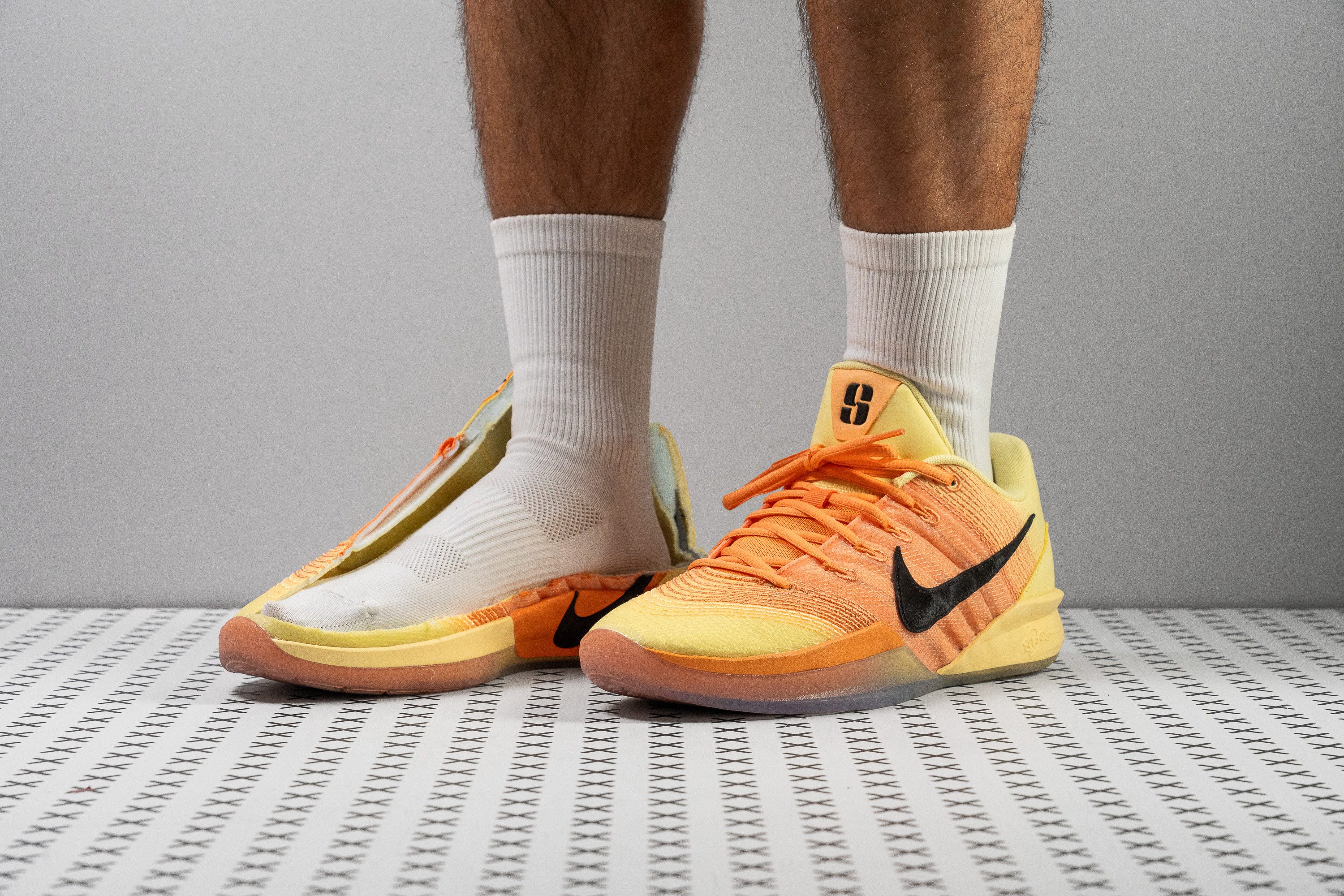














































What makes it the best?
Pros
- Stellar court feel from a grounded platform
- Highly responsive with a propulsive forefoot
- Excellent side-to-side stability
- Amazing lockdown and containment
- Reliable outsole traction
- Super flexible and manoeuvrable
- Much lighter than average
- True to size and width
Cons
- Low shock absorption
- Not for outdoor courts
- Not for wide feet
- Lacks toebox durability
Best basketball shoes with high energy return and support
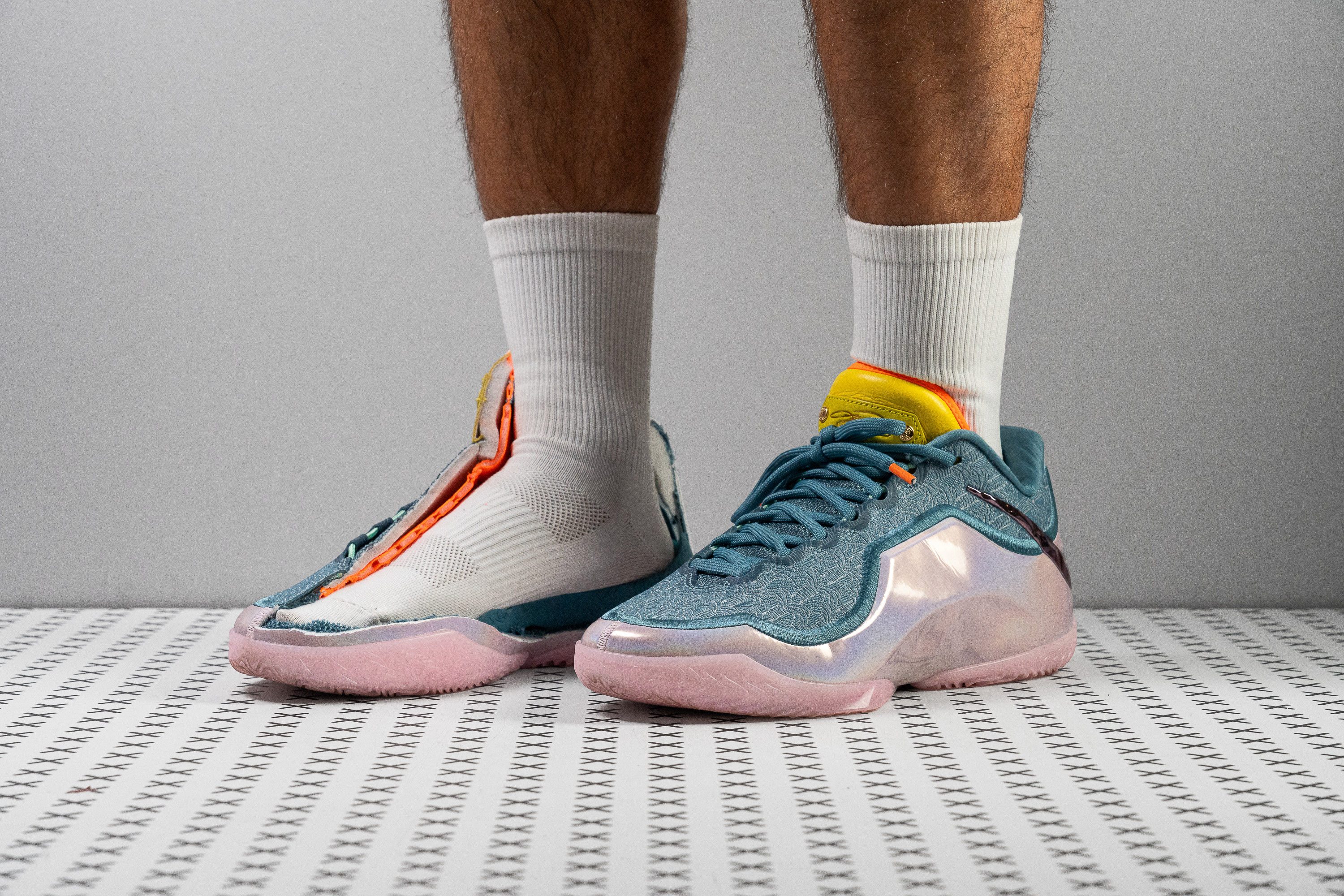












































What makes it the best?
Pros
- Outstanding energy return
- Excellent shock absorption in the heel
- Fantastic outsole traction
- Top-tier stability and ankle support
- Highly secure foot lockdown
- Exceptional durability
- Decent flexibility given the design
- True to size and width
Cons
- Still one of the heaviest
- Not for outdoor courts
- Extremely low toebox height
- Not breathable
- Rapid price increase
Best basketball shoes with high energy return for narrow feet
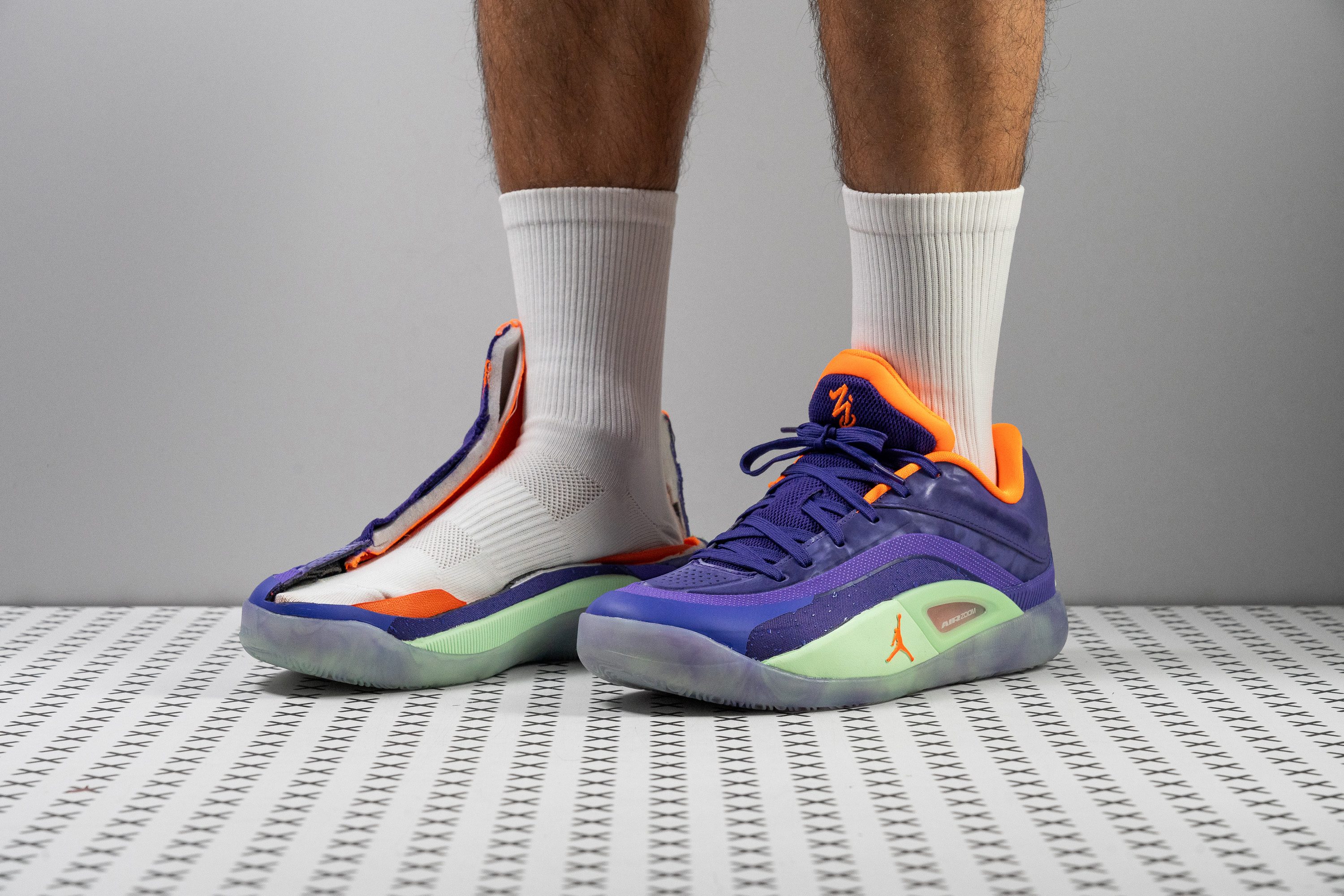














































What makes it the best?
Pros
- Above-average shock absorption
- Propulsive ride with full-length Air Zoom
- Cushioning doesn't mute court feel
- Balanced outsole traction
- Feels agile and manoeuvrable
- Good lateral support
- Fantastic upper and outsole durability
Cons
- Fit is still snug
- Got heavier than average
- Lacks breathability
Best budget basketball shoes with high energy return
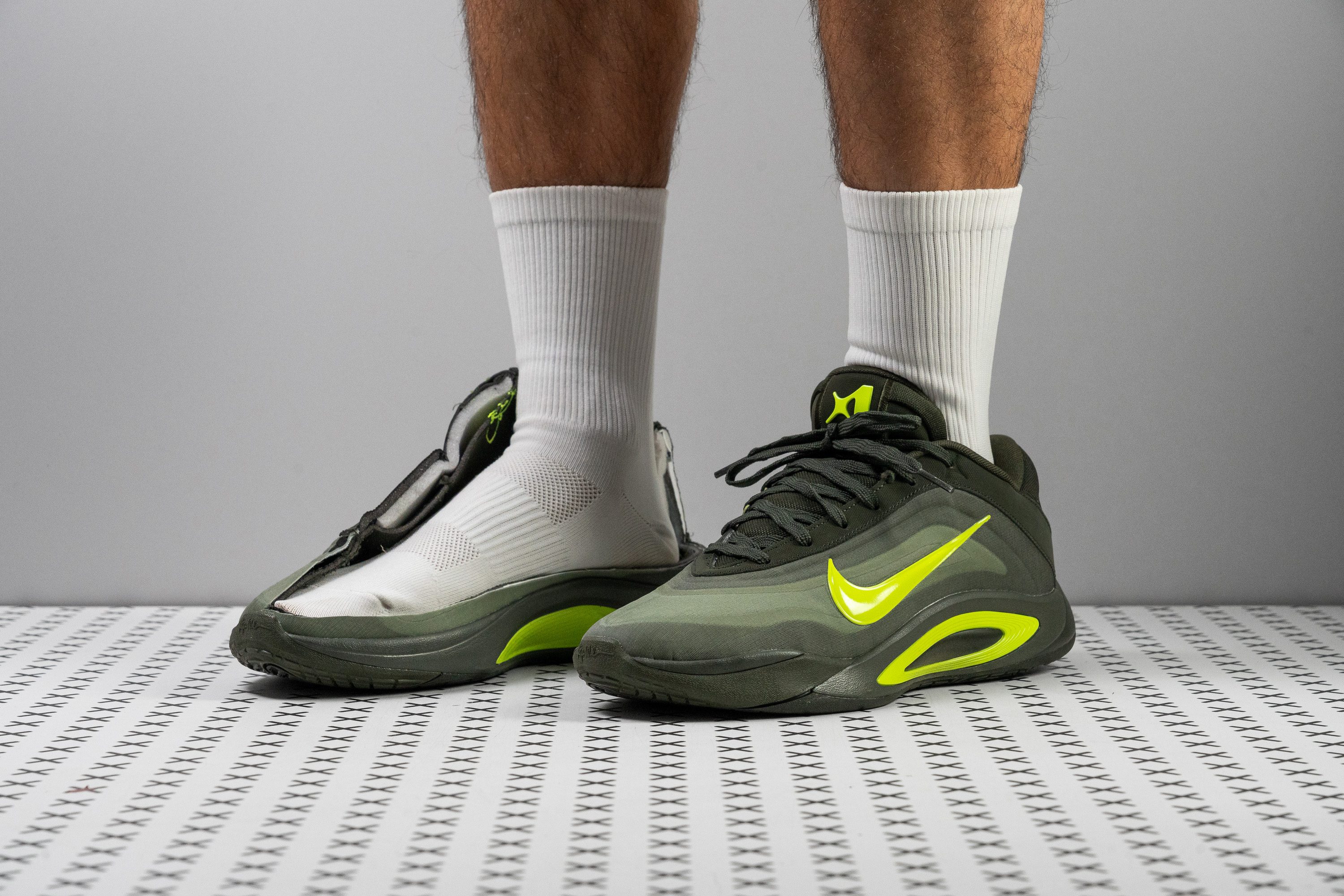













































What makes it the best?
Pros
- Excellent shock absorption heel to toe
- Impressive energy return from Cushlon alone
- Comfortable and padded in-shoe experience
- Strong multi-directional traction
- Impressively light for its package
- Superb stability and ankle support
- Fantastic value for money
Cons
- Not breathable at all
- Cheap-feeling materials lack durability
- Low and tapered toebox
Energy return vs. shock absorption in basketball shoes
While both energy return and shock absorption are related to the shoe’s underfoot cushioning, the two reflect entirely different characteristics.
When the shoe’s sole compresses under the load of runs, jumps, and first steps, shock absorption indicates how much of the generated force is absorbed by the shoe (aka impact protection), whereas energy return shows how much of that force returns to the player (aka rebound).
Our extensive lab data shows that basketball shoes with the highest energy return do not necessarily have high shock absorption as well. You can have a very bouncy yet minimally cushioned shoe (like Nike Sabrina) or a well-cushioned yet a bit mushy shoe (like NB Fresh Foam BB).
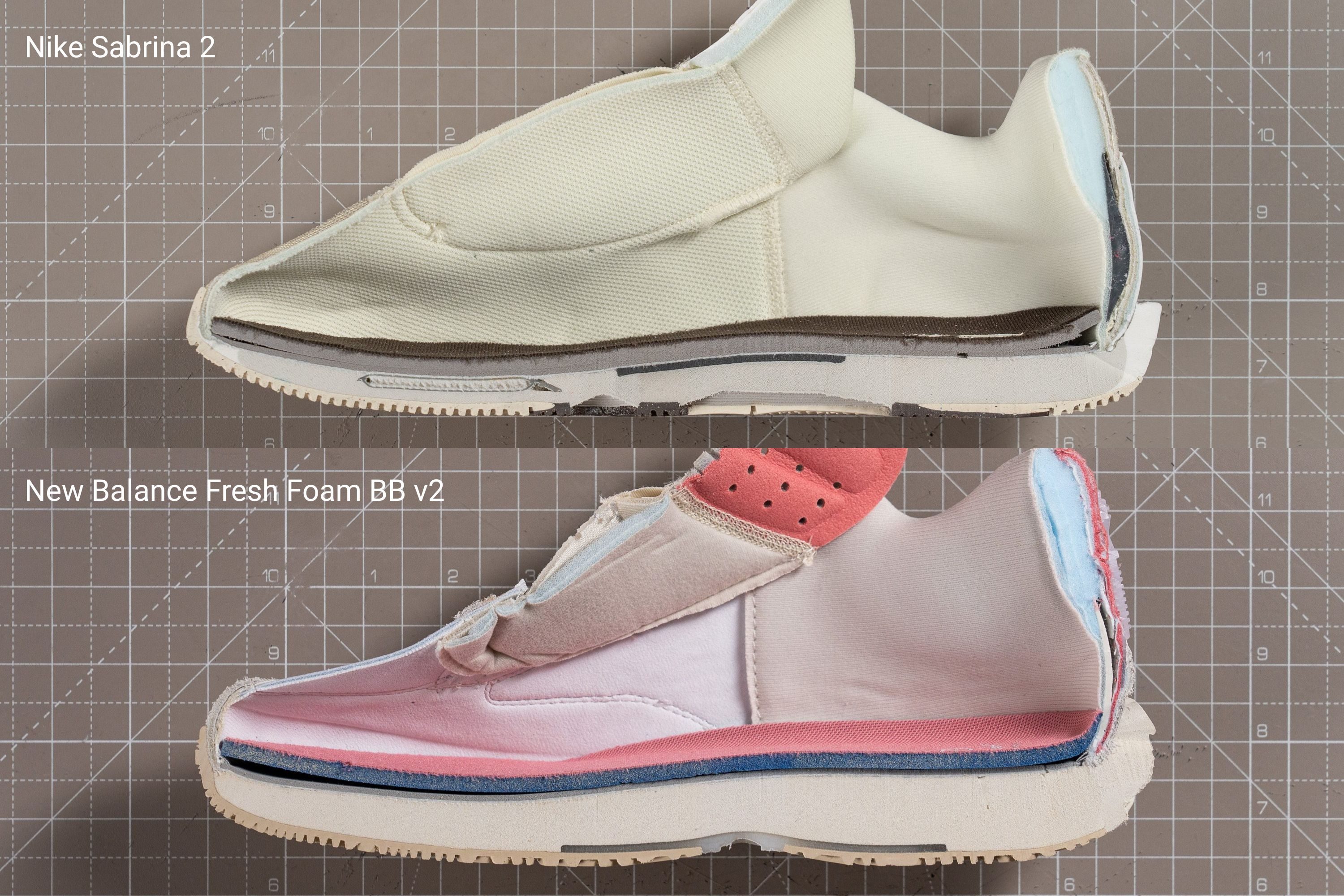
You can find out which basketball shoes have the highest shock absorption in our respective guide.
Pros: The benefits of high energy return in basketball shoes
It is important to note that high-rebound shoes don’t just give you additional energy out of nowhere. These shoes are simply more effective at restoring their shape after being compressed. It is your own energy (or rather some part of it) that is stored and then released by the shoe’s midsole.
In running shoes, that means increased running economy (less effort needed to maintain high speed), and in basketball shoes, it translates into the following benefits:
1. Explosiveness for take-offs: The added bounce provides an extra lift for first steps, jump shots, contested layups, and directional bursts.
The effect is particularly noticeable with prior momentum, when you take a few steps before launching off the ground, as you don’t get the same effect from jumping from a standstill position (i.e., rebounds and blocks).
So, when someone searches for ‘basketball shoes for jumping’ or ‘jumping higher,’ they are in fact looking for a shoe with a high energy return.
2. Responsiveness for runs: Similar to running shoes, high-energy hoop shoes help you maintain fast speed during transition runs, drives to the basket, and running up and down the court throughout the match.
3. Fatigue reduction: Saving a little more of your own energy in each step, responsive shoes help to reduce fatigue and keep you fresher for all four quarters or multiple games.
Guards and forwards with fast, explosive, and attacking playing styles are most likely to benefit from high-rebound basketball shoes.
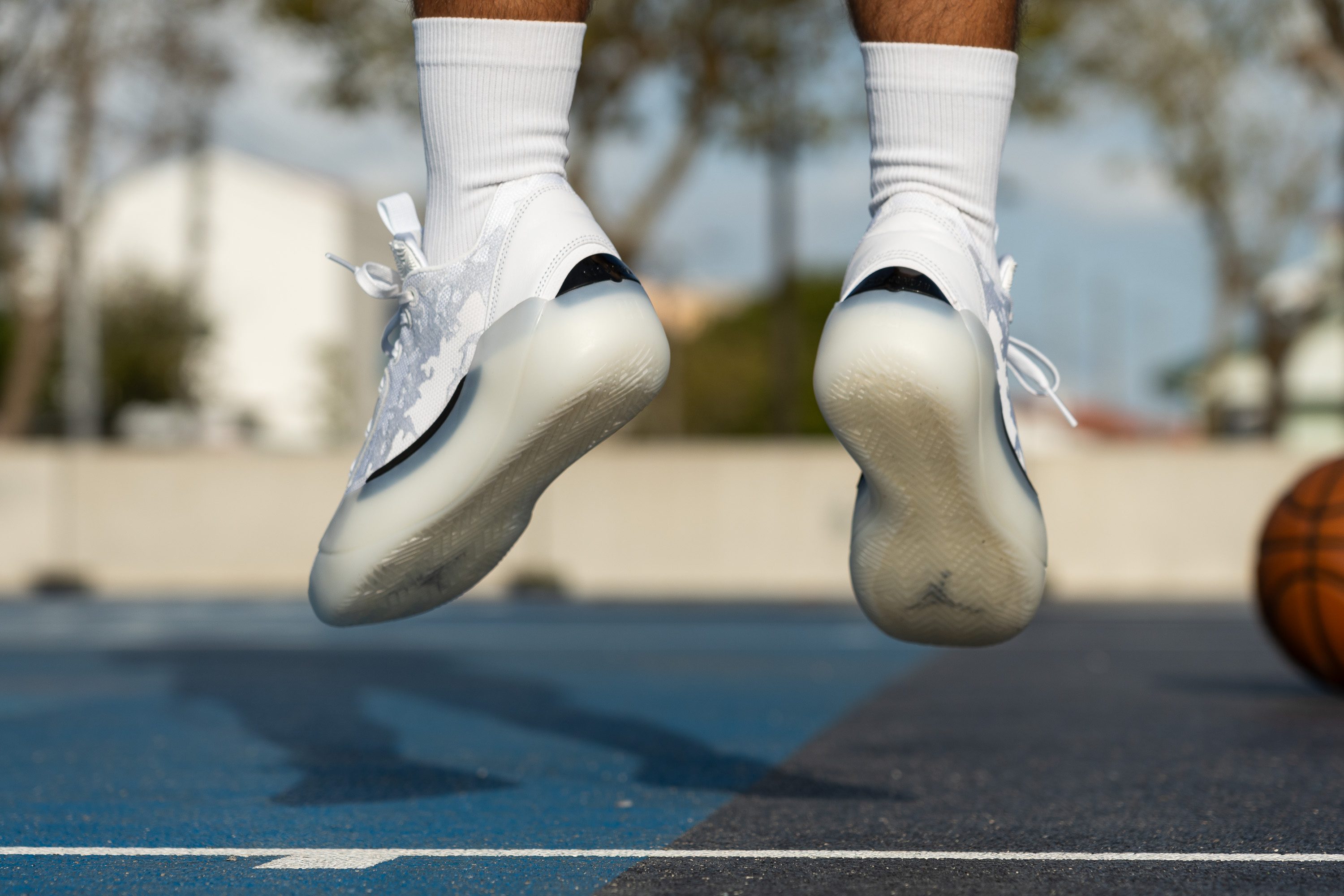
Cons: The dark side of high energy return
The aforementioned advantages of high energy return can easily create an illusion that some shoes can magically turn you into a better player. And without a solid body of research* on the topic, this illusion gains traction much more quickly.
*A study conducted by the APL brand to prove that their Concept 1 shoe’s Load ‘N Launch technology increases jump height is not a ‘solid’ body of research, in our opinion. Even though the shoe was banned by the NBA in 2010 because of ‘undue competitive advantage,’ the ban was soon lifted in 2011.
Sure, we can draw some parallels with running shoes (where studies are innumerable), but there is still a lot to learn about the impact of a basketball shoe’s energy return on the player’s performance.
Individual foot shape, pronation angle, landing pattern, and playing style further complicate the matter. But what we can do right now at RunRepeat is to measure how much rebound a shoe delivers in a controlled setting. And that’s a good starting point for giving online buyers a better sense of how each shoe feels underfoot.
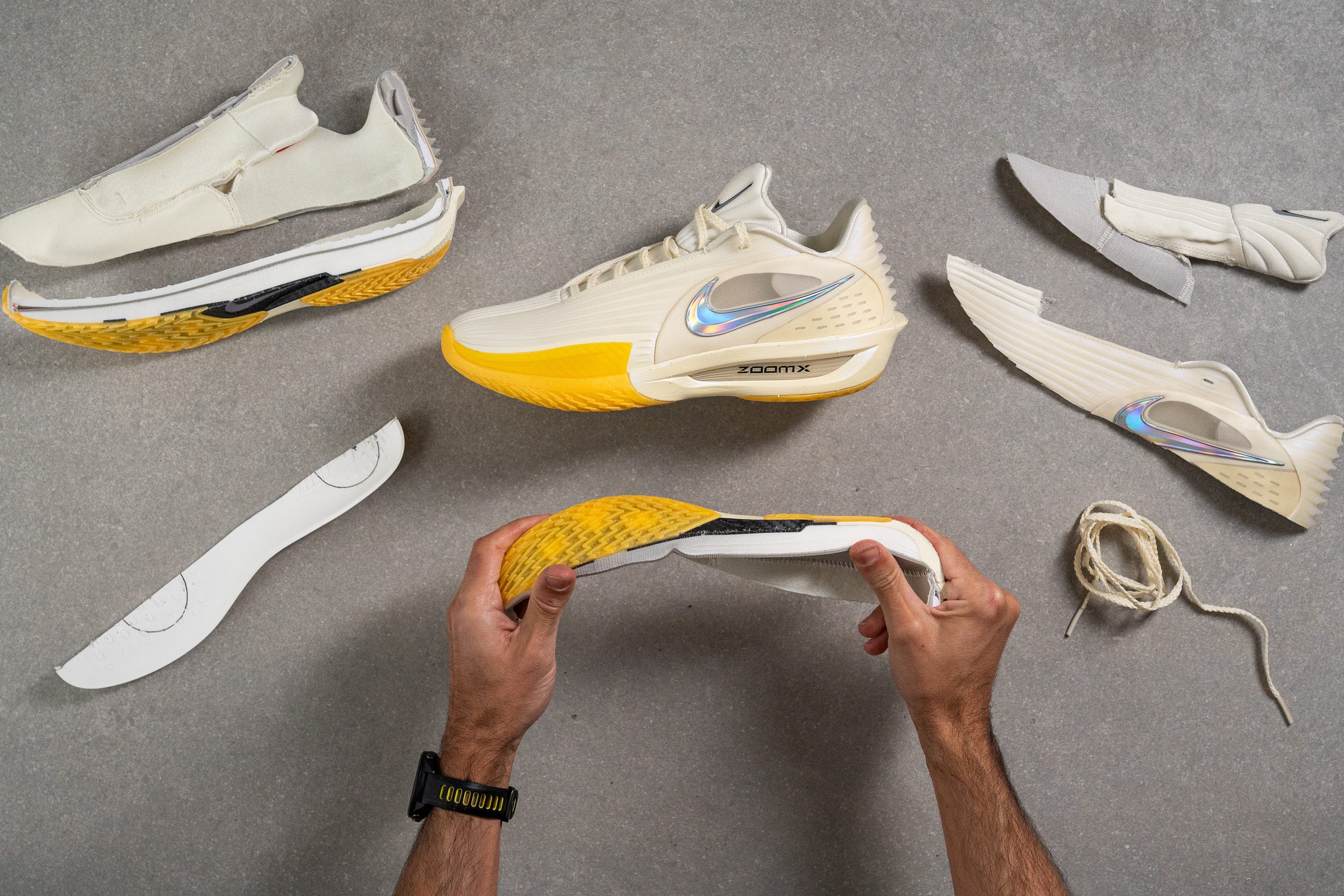
And now let’s cover the drawbacks of high energy return in basketball shoes:
1. Reduced court feel: Too much rebound can dull your connection with the floor, which is not ideal for players who prefer a more controlled and grounded setup. And if high energy return is paired with a high stack (thicker sole), the shoe makes you feel even more disconnected.
2. Less stability: Centres and post players are likely to feel less in control of the movement in overly bouncy shoes.
3. Not for lighter players: In most cases, it takes a good amount of force to activate the shoe’s energy return to the fullest capacity. Lighter players often don’t compress the sole as much as it takes to achieve a desirable rebound effect. That’s why two players can experience the same shoe differently!
If you are a beginner player who is not yet sure about your basketball shoe preferences, it is always safe to choose from a myriad of options with a moderate energy return of 56-64%.
This category is also suitable for all-around players who prefer a mix of court feel and bounce.
And if you are a bigger player (centre, post player), you might as well prefer shoes with an even lower energy return of 54% or less. These shoes grant a greater court feel and control, ensuring more stable landings and lateral movements.
Price: How much for a shoe with high energy return?
Are shoes with higher energy return results more expensive? Our data shows that they are indeed.
Here are the average prices of our lab-tested basketball shoes by the energy return they showed in the forefoot:
| Energy return (forefoot) | Average MSRP |
| Low (< 56%) | £120 |
| Medium (56-64%) | £140 |
| High (> 64%) | £170 |
Brands use more advanced cushioning foams and plates to elevate the shoe's responsiveness and rebound, which inevitably increases the price.
